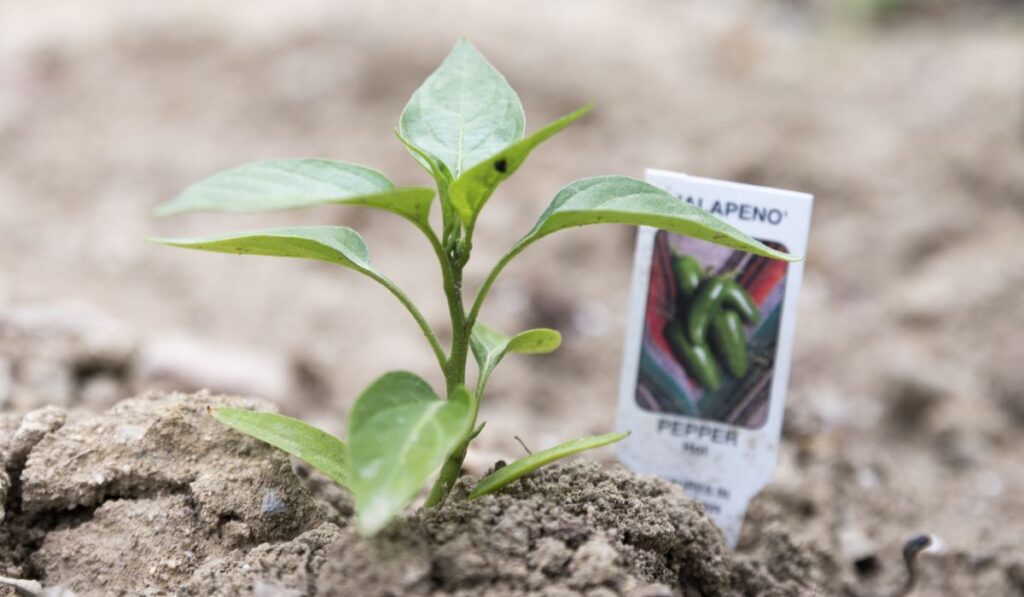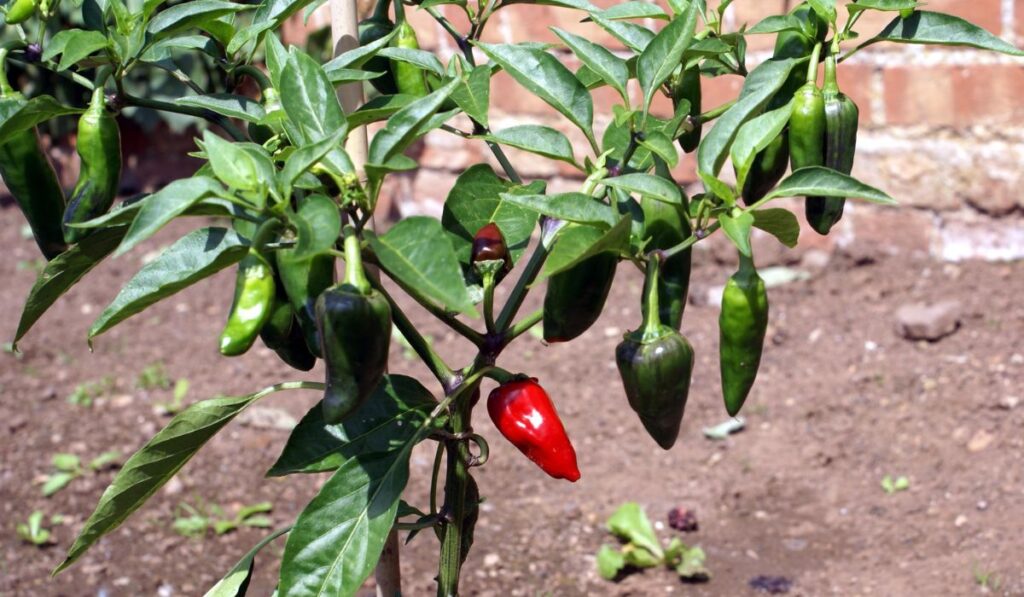If you have a green thumb and love spicy food, then growing jalapeño peppers is the perfect hobby for you! Not only are they relatively easy to grow, but they also pack a serious punch when it comes to flavor. But before you can enjoy the fruits (or vegetables) of your labor, you need to know when to plant jalapeños and how to take care of them properly.
Jalapeño seeds should be planted 2 months before the last frost date. They need at least 6 hours of sunlight daily and thrive in temperatures between 77 and 85˚F (25-29˚C). In colder areas, it’s best to grow jalapeño seeds indoors and then transfer the seedlings outdoor when the weather warms up.
From salsas and guacamoles to sandwiches and salads, there are endless ways to enjoy jalapeños. And when they come from your own backyard, they’ll taste even better. So, what are you waiting for? Let’s look at everything you need to know about planting and growing jalapeños, so you can have a bumper crop in no time.
When Should You Plant Jalapeño Seeds?

The best time to plant jalapeño seeds (on Amazon) is at least eight weeks before the last frost date in your area, when the average temperature goes above 60 degrees Fahrenheit (15˚C). The ideal growing temperature for jalapeño plants is between 77 and 85 degrees Fahrenheit (25-29˚C).
If you live in a warm climate where spring temperatures remain above 60˚F (15°C), you can plant your jalapeño seeds directly in the garden. If you live in a cooler climate, it’s best to start your seeds indoors around ten weeks before the last frost and then transplant them outside once the weather warms up.
If you want to transfer seedlings bought from the nursery, wait until all danger of frost has passed and the nighttime temperatures are above 60˚F (15°C) before planting them outside.
When transplanting, make sure to harden off your jalapeño plants first by gradually acclimating them to outdoor conditions over the course of a week. This process will help prevent transplant shock and ensure that your plants are strong enough to thrive in their new environment.
Do Jalapeños Need Full Sun?
Jalapeños love the sun and need at least 6 hours of direct sunlight daily to produce a good crop. These plants don’t do well in shady areas; even in partial shade, they become leggy and produce fewer peppers. So make sure you give them a sunny spot in your garden.
If you live in a hot climate, you’ll need mulching to keep the roots cool and prevent the plants from drying out. But the foliage can usually handle the heat without too much problem.
How Long Does It Take a Jalapeño Plant to Produce Peppers?
The whole growing process from seed to harvest usually takes around 3-4 months. Once the plants start producing peppers, they will continue to give crop for several weeks or even months.
Here’s a breakdown of the timeline:
- Start seed indoors: 8-10 weeks before the last frost
- First saplings appear: 2-3 weeks
- Repotting/transferring seedlings: When they have 2-3 true leaves
- Hardening off seedlings: 1 week
- Transplanting outdoors: After the last frost and when nighttime temperatures are above 60˚F (15°C)
- Start of flowering: around eight weeks after transplanting
- First peppers appear: 10-12 weeks after transplanting
- Continuous harvest: 2-3 months
What Grows Well With Jalapeños?
Jalapeños are a wonderful companion for many other plants, herbs, and flowers. Some of these combinations have symbiotic partnerships, with one helping the other grow better by repelling pests, providing soil nutrients, or simply attracting pollinators.
Other pairings share the same growing conditions and complement each other aesthetically.
Here are some of the best plants to grow with jalapeños:
Carrots
Carrots and jalapeños love each other. The two plants share many of the same growing requirements, and the deep roots of the carrots help loosen the soil and make it easier for the jalapeño plants to take up nutrients. The foliage also acts as a mulch, keeping the jalapeño plants’ roots cool and moist.
Spinach
By growing spinach with jalapeños, you can use the space more efficiently as the spinach won’t compete for the sun and water. Plus, you’ll get nice spacing between the plants, so there’s plenty of room for air circulation, which helps prevent disease. Heavy spinach foliage also keeps the weeds at bay.
Basil
Basil and jalapeños are a perfect match. Not only do they share the same growing conditions, but the strong scent of basil also helps repel pests like aphids and thrips that can damage jalapeño plants. But above all, basil is known to enhance the taste of jalapeño peppers.
Rosemary
Rosemary is another great companion plant for jalapeños. Like basil, the aromatic foliage helps keep pests away. But rosemary also has the added benefit of competing weeds for space and nutrients, so your pepper garden remains healthy and vigorous.
Onions
Onions are a classic companion plant for many kitchen garden plants. Garden pests like cabbage worms, slugs, or aphids run from the smell of onions. And because it’s a root plant, growing onions with jalapeños won’t compete for sunlight or space.
Swiss Chard
Chard is a great leafy green to grow with jalapeños. Chard provides shade and protection from strong wind when jalapeño plants are small and young. The two plants also share the same soil requirements and don’t compete for nutrients.
Chives
Chives are another perfect match for jalapeños. Like onions, chives are natural pest repellents and also improve the taste profile of jalapeños. Plus, growing chives improve the drainage of the soil and prevent compaction.
Tomatos
If you want a companion plant with the same life cycle as jalapeños, consider growing tomatoes. Tomato plants are great at deterring weeds in the garden and repel pests to some extent. But above all, when you have tomatoes and jalapeños in your garden, you’ll have all the makings of a perfect salsa.
Lettuce
Lettuce is a great low-growing companion plant for taller plants like jalapeños. Lettuce provides ground cover that helps prevent weeds and keeps the soil moist.
Can Jalapeño Plants Survive in Winter?
Jalapeño plants are typically grown as annuals, meaning growers start with new plants each year. However, in their natural environment, jalapeños are actually perennial plants that can live for several years. The plant goes into dormancy in the winter and grows back each spring.
So, yes, your jalapeño plant can technically survive the winter — if you live in an area with mild winters. However, you’ll have to put some effort into overwintering jalapeño plants as they are susceptible to frost damage, root rot, and other diseases. If the temperature dips too low, even for a short period of time, it can kill your jalapeño.
Honestly, overwintering jalapeños isn’t so easy, and some verities won’t survive no matter what you do. If you want to try, your best bet is to grow a hardy variety like Brazilian Starfish (on Amazon) or Habanero (also on Amazon). These varieties are more tolerant of cold weather and have a better chance of surviving the winter.
How Do You Keep Jalapeño Plants Alive Over Winter?

Overwintering jalapeños is a four-step process; if you follow these steps, you’ll give your plants the best chance of surviving the winter.
1. Bring the Plants Inside
You can skip this step if the winter temperature in your area doesn’t dip below freezing. But if it does, you must bring the plants inside before the first frost. Be sure to choose a sunny spot in your house, like a south-facing windowsill, under grow lights, or in a greenhouse.
And if you’re transferring the plants to a pot, dig up as much of the root ball as possible to ensure it can get nutrients and doesn’t dry out. Use a clean potting mix and give a nice spray of water to the leaves to remove hidden pests.
2. Harden the Plants
Let the plant acclimate to the temperature by keeping it outside during the day and bringing it inside at night for about a week. Reduce watering during this process, so the plant can start going dormant. You’ll begin to see the leaves slowly drying out and falling off the plant. The plant will remain dormant over the winter, so don’t fertilize it, and only water it when the soil is dry.
3. Cut Back the Plants
Once the plant has acclimated, it’s time to cut it back. Remove any dead leaves or stems and cut the plant back by about half its size. This will help the plant conserve energy to make it through the winter.
If you’re not bringing the plant indoors, deadhead the plant and then cover the base of the plant with a layer of mulch to insulate it from the cold. You can also put a tarp or frost cloth (on Amazon) over the plant to provide extra protection.
4. Prepare for Spring
Once the nighttime temperatures rise to 55˚F (12˚C) in spring, slowly introduce the plant to the outdoors again. Start by putting it outside for a few hours each day and then increasing the time until it can stay outside all day.
Once the plant is acclimated, you can transfer it back into the ground. Start watering every two-three days to keep the soil moist, and apply a potassium-rich fertilizer to encourage growth. If your plant has grown leggy or spindly over winter, you can pinch back the stems to encourage bushier growth.
With a little effort, you can overwinter your jalapeño plants and enjoy fresh jalapeños from the same plant next year.
